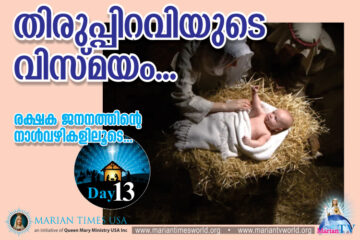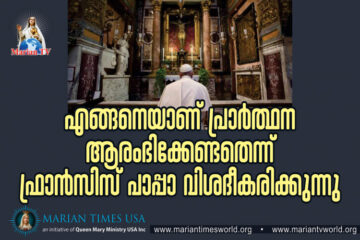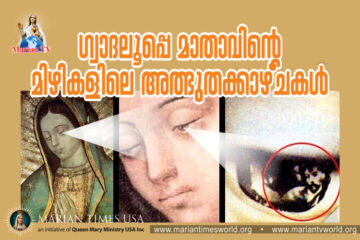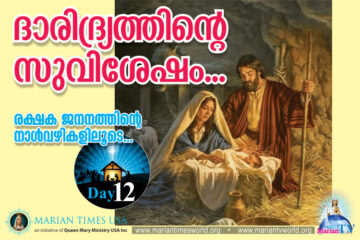Stop making my Father’s House a marketplace! (Sunday Homily)


~ Fr. Abraham Mutholath ~
Chicago, USA. ~
HOMILY THIRD SUNDAY OF THE DEDICATION OF THE CHURCH
INTRODUCTION
The Temple of Jerusalem was the only place where the Israelites could offer sacrifices to God. The Temple authorities contaminated that holy dwelling place of God by allowing unjust business related to temple service. The Court of Gentiles became unsuitable for prayers and the pilgrims were exploited through the sales of sacrificial animals and money exchange. Just like cleaning of leaven before Passover from the Jewish houses, Jesus cleaned the House of God by expelling the corruptedmerchants and their merchandise. When Jews questioned him, Jesus predicted his resurrection as a sign of his authority over his Father’s house. “We are the temple of the living God.” (2 Cor. 6:16). Let us try to keep our lives holy dwelling place for God.
THE BIBLE TEXT (John 2:13-22)
Cleansing of the Temple.
(13) Since the Passover of the Jews was near, Jesus went up to Jerusalem. (14) He found in the temple area those who sold oxen, sheep, and doves, as well as the money-changers seated there. (15) He made a whip out of cords and drove them all out of the temple area, with the sheep and oxen, and spilled the coins of the money-changers and overturned their tables, (16) and to those who sold doves he said, “Take these out of here, and stop making my Father’s house a marketplace.” (17) His disciples recalled the words of scripture, “Zeal for your house will consume me.” (18) At this the Jews answered and said to him, “What sign can you show us for doing this?” (19) Jesus answered and said to them, “Destroy this temple and in three days I will raise it up.” (20) The Jews said, “This temple has been under construction for forty-six years, and you will raise it up in three days?” (21) But he was speaking about the temple of his body. (22) Therefore, when he was raised from the dead, his disciples remembered that he had said this, and they came to believe the scripture and the word Jesus had spoken.
INTERPRETATION
(13) Since the Passover of the Jews was near, Jesus went up to Jerusalem.
Passover, one of the three Pilgrim Festivals, was a commemoration of the liberation of Israelites by God from Egypt and their formation as an independent nation under the protection of God and leadership of Moses. The feast was celebrated on 15th of the Hebrew month of Nisan and lasted for a week (Leviticus 23: 4-14, Deuteronomy 16:1-8).Once the temple was established in Jerusalem, the feast was permanently celebrated there. Every adult Jew living within 15 miles around Jerusalem had to attend Passover in the Temple. However, all Jews, regardless of how far away they lived, tried to make pilgrimage to the Temple during this main feast.
Jesus had attended the Temple several times. His mother Mary and foster father Joseph had presented him in the Temple when he was young (Luke 2:22-38). Another visit of Jesus in the Temple with his parents was when he was twelve years old (Luke 2:41-52). Jesus might have attended the feast of Passover and other feasts in the Temple several times during the thirty years of his private life that the evangelists have not documented because those visits were not significant or relevant for the readers. During the three years of his public ministry he celebrated three Passovers in Jerusalem. (John 2:13, 6:4, and 11:55).
(14) He found in the temple area those who sold oxen, sheep, and doves, as well as the money-changers seated there.
The Temple of Jerusalem consisted of four courts: TheCourt of the Priests, the Court of Israel, the Court of the Women, and the Court of the Gentiles. The outer court of the Gentiles was the only space in the Temple where Gentiles could enter and pray. They were forbidden to go in any of the inner courts and anyone violating it was put to death (Acts 21:27-32). All kinds of business and exploitation related to temple worship and offerings were taking place in the Court of Gentiles. So, that place of worship was made unfit for the intended purpose. Formerly the money exchange and sales of animals for sacrifice were taking place on the Mount of Olives. Later the merchants bribed the temple authorities and shifted their business to the Court of Gentiles making it unholy, noisy, and unjust.
Sold oxen, sheep, and doves
The business at the Court of Gentiles was not for selling and buying of general merchandise but a necessary service for the pilgrims coming for the feast of Passover from different countries of the world. They usually offer five kinds of sacrifices: The burnt offering, the meal offering, the peace offering, the sin offering, and the trespass offering. Various offerings are described in Leviticus chapters 1 to 7. The pilgrims who were coming from faraway places found it convenient to buy sacrificial animals or doves somewhere near the temple area. They were buying animals and birds for sacrifice and exchanging foreign currency to the acceptable temple money. Bible scholars believe that such business started in the temple area after the return of Jews from Babylonian captivity. By that time, Israelites were dispersed and began to come to the Temple from foreign countries. So, availability of sacrificial items near the temple was a blessing for the pilgrims, provided it was done justly and without disturbance to the temple worship.
Money changers
Adult pilgrims were supposed to offer half shekel for the service of the temple. “Everyone who is enrolled, of twenty years or more, must give the contribution to the LORD. The rich need not give more, nor shall the poor give less, than a half-shekel in this contribution to the LORD to pay the ransom for their lives.” (Exodus 30:14-15). Coins with images were not allowed for offering in the Temple. Pilgrims were coming from different countries with Syrian, Egyptian, or Greek coins. Such coins were stamped with the symbols or images of pagan monarchs. So, they were not acceptable into the Temple treasury. The pilgrims had to exchange them for acceptable coins.
(15) He made a whip out of cords and drove them all out of the temple area, with the sheep and oxen, and spilled the coins of the money-changers and overturned their tables,
If the business at the Temple was a needed service for the pilgrims, why Jesus became furious and physically attacked the merchants, drove out the animals, spilled the coins, and overturned the tables? There were several reasons for the action.
1. Jesus was not happy that the business and money exchange that was once done on the Mount of Olives was shifted to the Court of Gentiles. He might have noticed the change happening during the past years and was waiting to act during his public ministry. The Court of Gentiles, once a place of worship, became a crowded and noisy marketplace with merchandise, sellers and buyers.That was defiling the Temple by denying worship of the Gentiles and dishonoring the House of God. By this act, Jesus was also showing that the Gentiles will have their rights honored in his kingdom.
2. Only unblemished or perfect animals and birds were allowed for sacrifice in the Temple. The priests had appointed inspectors to examine the sacrificial animals and birds. If the animals were brought from outside, there was every possibility that they were rejected for minor reasons. It was part of a deal between the priests and merchants in the temple to exploit the pilgrims by charging an unjust price for the animals and birds sold in the Temple. Jesus was revolting against this religious exploitation.
3. Though money exchange was supposed to be a service, great exploitation of the pilgrims was taking place by charging an enormous amount as exchange fee. Jesus could not tolerate that exploitation.
So, the true spirit of prayer and selfless service was lacking that made Jesus furious and act as a revolutionary.It has been a Jewish custom that the woman of the family would do a general cleansing of the house and remove any leaven on the eve of Passover. At the end, the head of the family used to inspect and carefully remove any last particle of leaven left unnoticed in the house. Similarly, Jesus was cleansing the Temple which was his Father’s house.
Since animals were sold in the Court of Gentiles, it was easy for Jesus to find ropes there. Collecting several cords, he could easily make a whip. He drove the animals and merchants from the temple area. This was a single-person revolution. The unexpected action, the popularity of Jesus as a prophet, his fame as a miracle worker, the intensity of his face expression, and the self-awareness of the merchants that they were doing wrong, might have made the merchants not to physically counter attack Jesus right there.
(16) and to those who sold doves he said, “Take these out of here, and stop making my Father’s house a marketplace.”
Jesus was soft to doves and their merchants. He expressed the reasoning for his action. He did not want to make the Temple a marketplace. Moreover, he also revealed that he is the Son of God by expressing that the Temple was his Father’s house.
Jesus’ action was also a fulfillment of Malachi 3:1-2. “Now I am sending my messenger—he will prepare the way before me;And the lord whom you seek will come suddenly to his temple;The messenger of the covenant whom you desire—see, he is coming! says the LORD of hosts.But who can endure the day of his coming?Who can stand firm when he appears?For he will be like a refiner’s fire,like fullers’ lye.” John the Baptist came as the messenger and Jesus came suddenly to purify the Temple.
(17) His disciples recalled the words of scripture, “Zeal for your house will consume me.”
When the disciples witnessed the brave action of Jesus in the Temple, they remembered Psalms 69:9 (10) written by King David:“Because zeal for your house has consumed me,I am scorned by those who scorn you.” David was expressing his passion for the house of God that also became a prediction and fulfillment in the life of Jesus.
The house of God could mean the tabernacle or the assembly of God. King David was very zealous for the house of God. Though he ardently wished to build the Temple, God did not allow him to do so during his reign. However, his zeal for the house of God was expressed in many ways:
1. King David brought the tabernacle toJerusalem (2 Samuel 6:12-19) and during the transportation of the Ark, David was jumping and dancing before the Lord (v.16).
2. David was passionate to build a permanent and splendid dwelling for the ark of the covenant (2 Samuel 7:2, Psalm 132:2-5).
3. David carefully collected all materials needed for building the Temple (1 Chronicles 29:1-5).
4. Since God did not allow David to build the Temple, he handed over all the building materials and the design to Solomon,his son and successor (1 Chronicles 28:11-21).
King David spent his whole life to unify and build up the assembly of God that were scattered (2 Samuel 5:1-5) and he also designed and collected all the valuable materials needed to build the Temple of God. This zeal of David was reflected in the passionate actions of Jesus who also worked to unify all nations including the Israelites and the Gentiles to build up his new Temple of God, the Church. Though Jesus prepared everything needed for the new Israel, his church was inaugurated only after his life on earth on the day of Pentecost. In his attempt to purify Israel, Jesus did the dramatic action of cleansing the Temple of God by expelling the merchants and their merchandise to convey the need to rectify the evils in the then Judaism.
(18) At this the Jews answered and said to him, “What sign can you show us for doing this?”
The Jews were shocked by the radical act of Jesus. Besides, he claimed that he was the son of God by describing the Temple as his Father’s house. So, they asked for proof of his authority. Just performing miracles that Jesus did, were not enough to prove the authenticity of a prophet (Deut. 13: 2-5).
John the Baptist had testified about Jesus to the Pharisees and Sadducees who came to him for baptism:“Even now the ax lies at the root of the trees. Therefore every tree that does not bear good fruit will be cut down and thrown into the fire. … His winnowing fan is in his hand. He will clear his threshing floor and gather his wheat into his barn, but the chaff he will burn with unquenchable fire.” (Matthew 3: 10-12). Jesus had shown this spirit of fire in the cleansing of the Temple.
(19) Jesus answered and said to them, “Destroy this temple and in three days I will raise it up.”
The communication on the temple, its destruction and restoration had double meaning for Jesus and the Jews. Though Jews took the temple in the physical sense, Jesus was talking about himself as the Temple of God. Temple stands for the divine presence of God among the people. In that sense, Jesus was the real temple and far better than the Temple rebuilt by Herod the Great that lacked the original ark and shekinah cloud. The destruction of the Temple for him was his crucifixion that was going to take place and he was sure of his resurrection on the third day.
(20) The Jews said, “This temple has been under construction for forty-six years, and you will raise it up in three days?”
The Jews and even the disciples could not grasp what Jesus meant when he said on the destruction and rebuilding of the Temple in three days. Jews were taking it in a physical sense on the Temple reconstructed by King Herod the Great. The first Temple that King Solomon built in 950 BC (1 Kings 6:1) was destroyed by Nebuchadnezzar, the king of Babylon in 586 BC(2 Kings 24-25, 2 Chronicles 36). After the Babylonian exile, the second Temple was built and dedicated in 515 BC (Ezra 6:15-18).Zerubbabel, the governor of Judah built this Temple with decree received from the then Persian King Darius. It was also known as Zerubbabel’s Temple or the Second Temple.
The older Jews who could recollect the First Temple were disappointed when the Second Temple was dedicated. The new one was 90 feet less, with fewer resources, and was less majestic compared to Solomon’s Temple. The most precious and holy items like the Ark of the Covenant and God’s glorious presence or Shekinah were missing.
King Herod the Great rebuilt the Second Temple enlarging it and making it magnificent like that of Solomon’s Temple. The construction of Temple started before the incarnation of Jesus in 19 BC and continued even after his resurrection until AD 63 without interruption to the sacrifices. Though the main portion of the Temple was completed before the death of King Herod the Great in 4 BC, the construction of the Temple continued. According to Jewish historian Josephus, 10,000 skilled laborers were at work. Since laity were not allowed to enter the holy places, 1,000 Levites,who were specially trained as builders and masons, were involved in the work. Wealthy Jews in diaspora contributed costly offering to beautify the Temple.
Though major portion of the Temple was completed when Jesus told the Jews on destroying and reconstructing the Temple in three days, the construction was still going on. The phrase Jesus used for “raise up” could mean either reconstructing a building or raising from the dead.
(21) But he was speaking about the temple of his body.
Body is the dwelling place of the soul or life of a person. When the soul departs, the body becomes useless and gets decayed. Jesus is God, the Word incarnate. He took the form of a human flesh (John 1:14). So, his body became the dwelling place or temple of God. The Sanhedrin along with Pilatedestroyed Jesus, the temple of God through his crucifixion. That temple of God resurrected on the third day as Jesus predicted. The disciples of Jesus realized the true meaning of Jesus’ words on “raise it up” only after his resurrection. The Evangelist John gives his interpretation on the meaning of Jesus’ words here for his readers.
(22) Therefore, when he was raised from the dead, his disciples remembered that he had said this, and they came to believe the scripture and the word Jesus had spoken.
The disciples began to believe in the word Jesus had spoken, refers to his prediction on his resurrection. He had predicted his resurrection at other times also. When the Scribes and Pharisees demanded a sign from Jesus, he said: “An evil and unfaithful generation seeks a sign, but no sign will be given it except the sign of Jonah the prophet. Just as Jonah was in the belly of the whale three days and three nights, so will the Son of Man be in the heart of the earth three days and three nights.” (Matthew 12:39-40).While going to Jerusalem he took his apostles aside and said: “Behold, we are going up to Jerusalem, and the Son of Man will be handed over to the chief priests and the scribes, and they will condemn him to death, and hand him over to the Gentiles to be mocked and scourged and crucified, and he will be raised on the third day.” (Matthew 20:18-19 & Luke 18:32-33). However, the disciples did not take these serious until the resurrection of Jesus.
Jewish leaders took these words of Jesus on his resurrection serious. So, the leaders asked Pilate permission to guard the tomb of Jesus so that the disciples would not remove his body and claim resurrection (Matthew 27:62-66). Since the disciples had no clue on this, they did not wait at the tomb of Jesus. When they noticed the empty tomb of Jesus and had seen Jesus with his celestial body after resurrection, they remembered the words of Jesus on the destruction and restoration of the Temple and associated them with his own resurrection.
The Evangelist John states that “they came to believe the scripture” which means the predictions on the resurrection of Jesus in the Old Testament. There are many such predictions in the Scripture. For example, Psalm 16:10 states: “For you will not abandon my soul to Sheol,nor let your devout one see the pit.” Peter referred to this in his speech on the Day of Pentecost (Acts 2:31) and Paul in his address in the synagogue (Acts 13:35-37). Other references to the same prediction are Psalm 30:4, 49:16 and 86:13. Hosea 6:2 says: “He will revive us after two days;on the third day he will raise us up,to live in his presence.” The disciples began to understand that the scripture came to its fulfillment in Jesus.
MESSAGE
1. Jesus used to attend the synagogue services and temple sacrifices on a regular basis. When he was a child, Joseph and Mary used to take him to the Temple, though the Holy Family was living in Nazareth far away from Jerusalem. Do we make sure that we and our children attend the religious services on a regular basis?
2. Jesus acted with anger when he found that the Temple of Jerusalem was made unholy, noisy, and unjust by the merchants with the support of the temple authorities. Are we keeping our church holy and fitting for worship?
3. Even after proving Jesus’ authority by his resurrection on the third day, his enemies did not believe in him but continued expelling Christians from synagogues and persecuting them. Our faith shall not be based just on reasoning and proof alone, but on close encounter of Jesus by listening to his words and imitating his actions.
4. As St. Paul taught: “We are the temple of the living God.” (2 Cor. 6:16). Let us try to keep our lives holy dwelling place for God.
5. There are many people, who once made their life holy through baptism and other sacraments, making the dwelling place of the Holy Spirit unholy by sinful life or ignoring God. Let us pray for them.
6. Many in the world have not yet heard of Jesus or are not convinced that they can become “the temple of the living God.” Let for pray for our missionaries and for the success of evangelization.
മരിയന് ടൈംസിലെ ഇന്നത്തെ പ്രധാനപ്പെട്ട അപ്ഡേറ്റുകള് താഴെ ലഭിക്കുന്നതാണ്.









